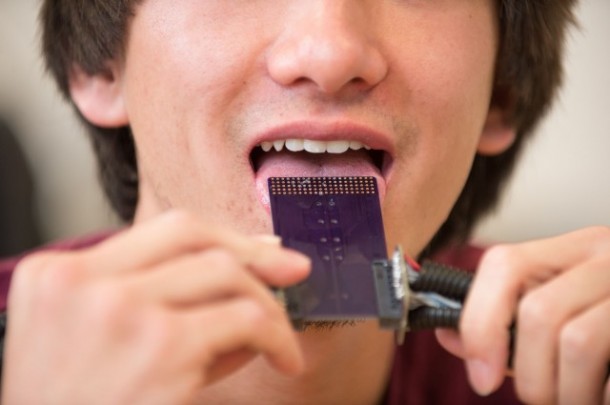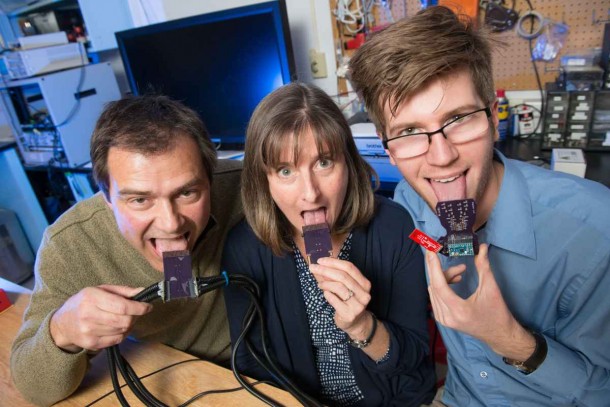Cochlear implants are great, with the ability to give people hearing for the first time, but stories about cochlear implants often overlook one tiny detail – the price. There’s a new breakthrough on the scene that could help people with significant hearing loss regain their sense of hearing for much less money.


A team of researchers led by Prof. John Williams, from Colorado State University has a different take on restoring hearing. Instead of relying on an expensive implanted device, their prototype combines an earpiece and a ‘smart retainer’ that helps users get auditory information through the tongue. Leslie Stone-Roy, a member of the team says that the tongue is great at transmitting tactile information to the brain. “The tongue contains thousands of nerves and the region of the brain that interprets touch sensations from the tongue is capable of decoding complicated information.” Scientists compare the system to Braille. “It’s similar in terms of your fingertips; that’s why we use fingers to read Braille,” she said. “The tongue is similar in that it has high acuity.”
The device bypasses the ear altogether, putting sounds inside user’s mouth. Instead of relying on the auditory processing of the inner ear, the device uses a Bluetooth earpiece to transmit data to a retainer, which then helps the brain interpret sensations as sound. The earpiece converts sound into electrical patterns and sends them to the retainer. When the wearer presses the tongue to the retainer, they pick up these distinct electrical patterns. With training, the brain learns to interpret these patterns as sound. Not only does the device help train the brain to recognize sounds and words, but it is much less of an investment than cochlear implants. At a cost of about $2,000 with no surgery needed – this might just be the next wave in hearing restoration. 
More work still needs to be done before we can see widespread use of this device. Williams and his team are still in the process of mapping out the nerves in the tongue to determine which parts would be more receptive to stimulation. A pretty cool new breakthrough, isn’t it?


